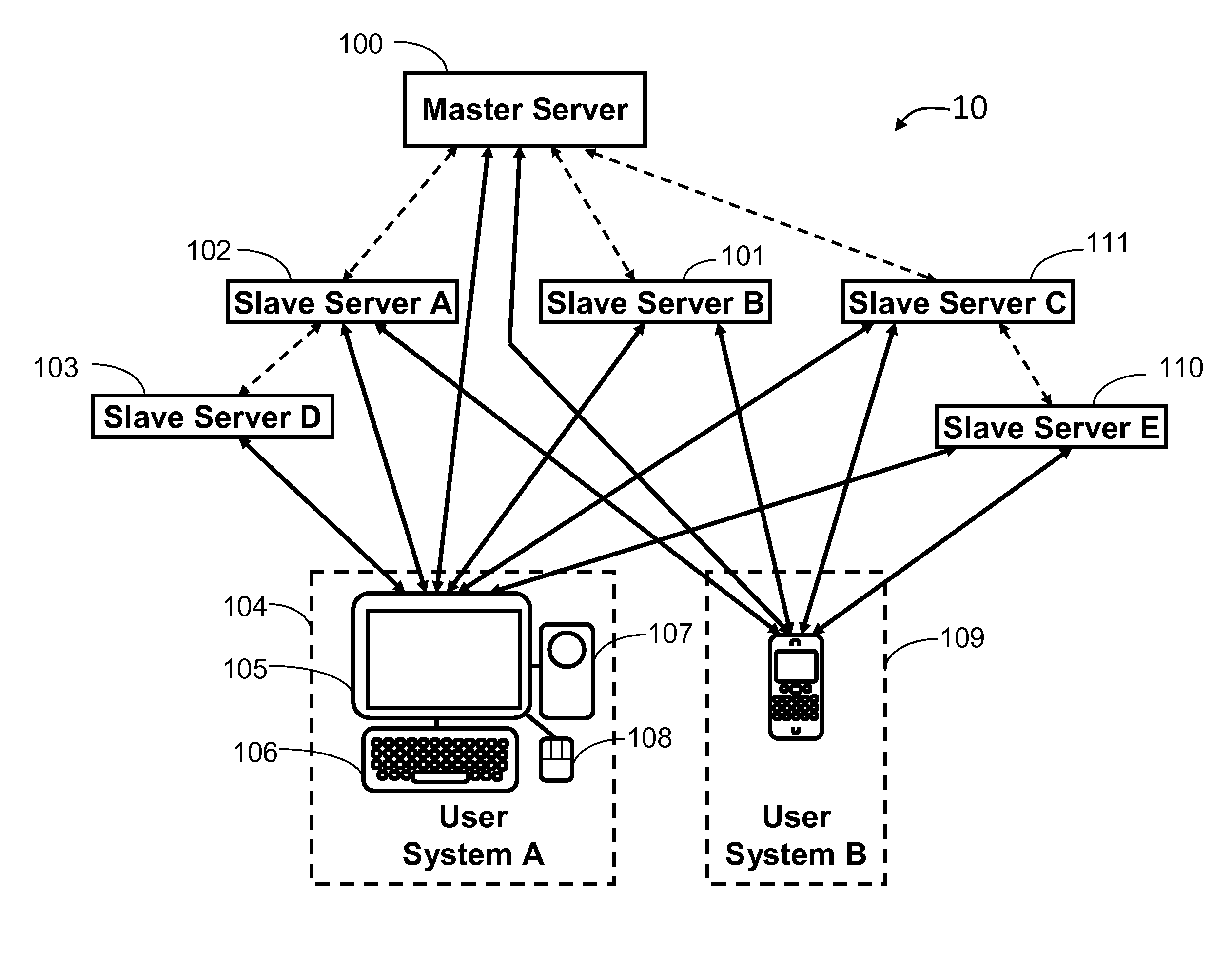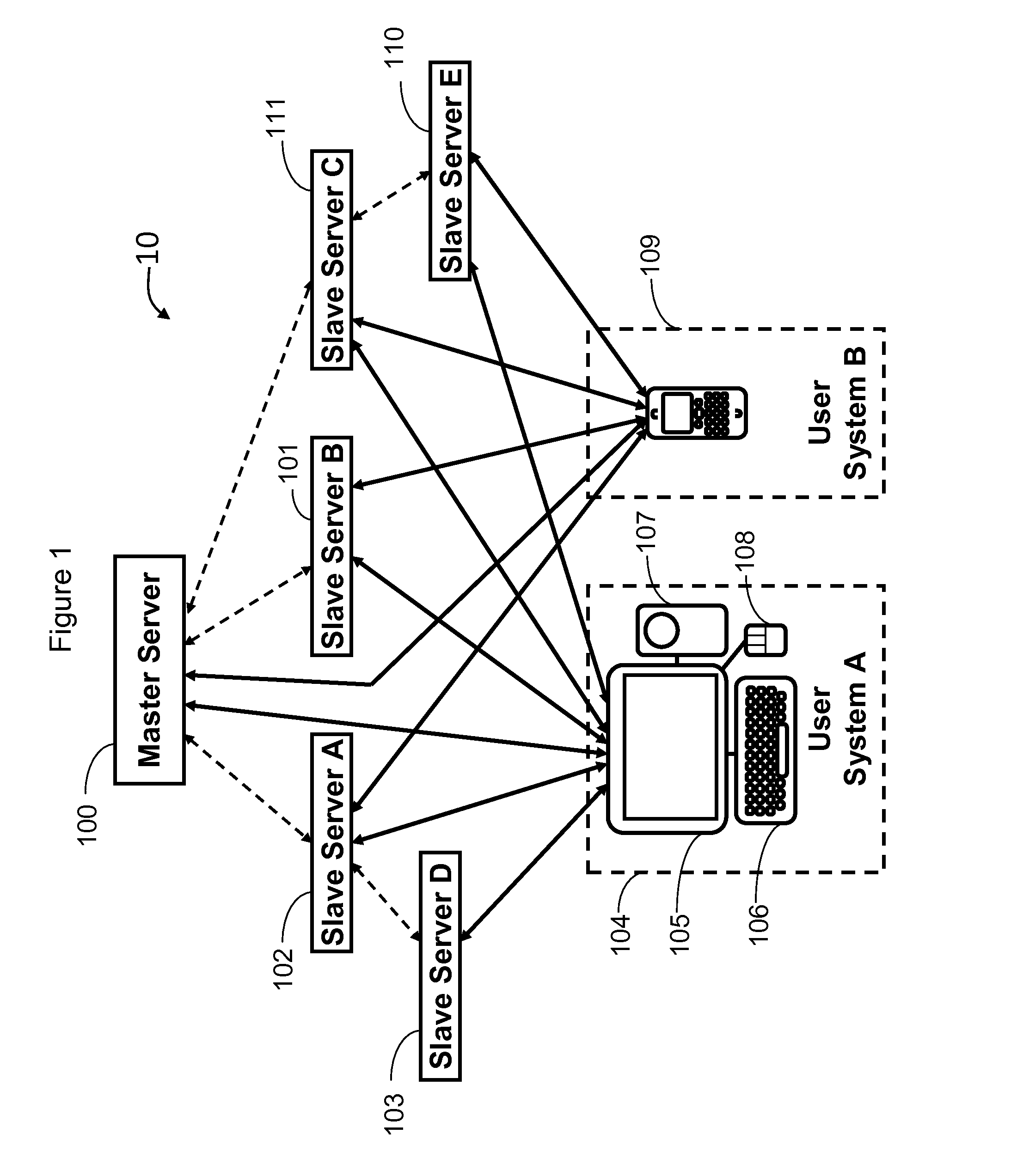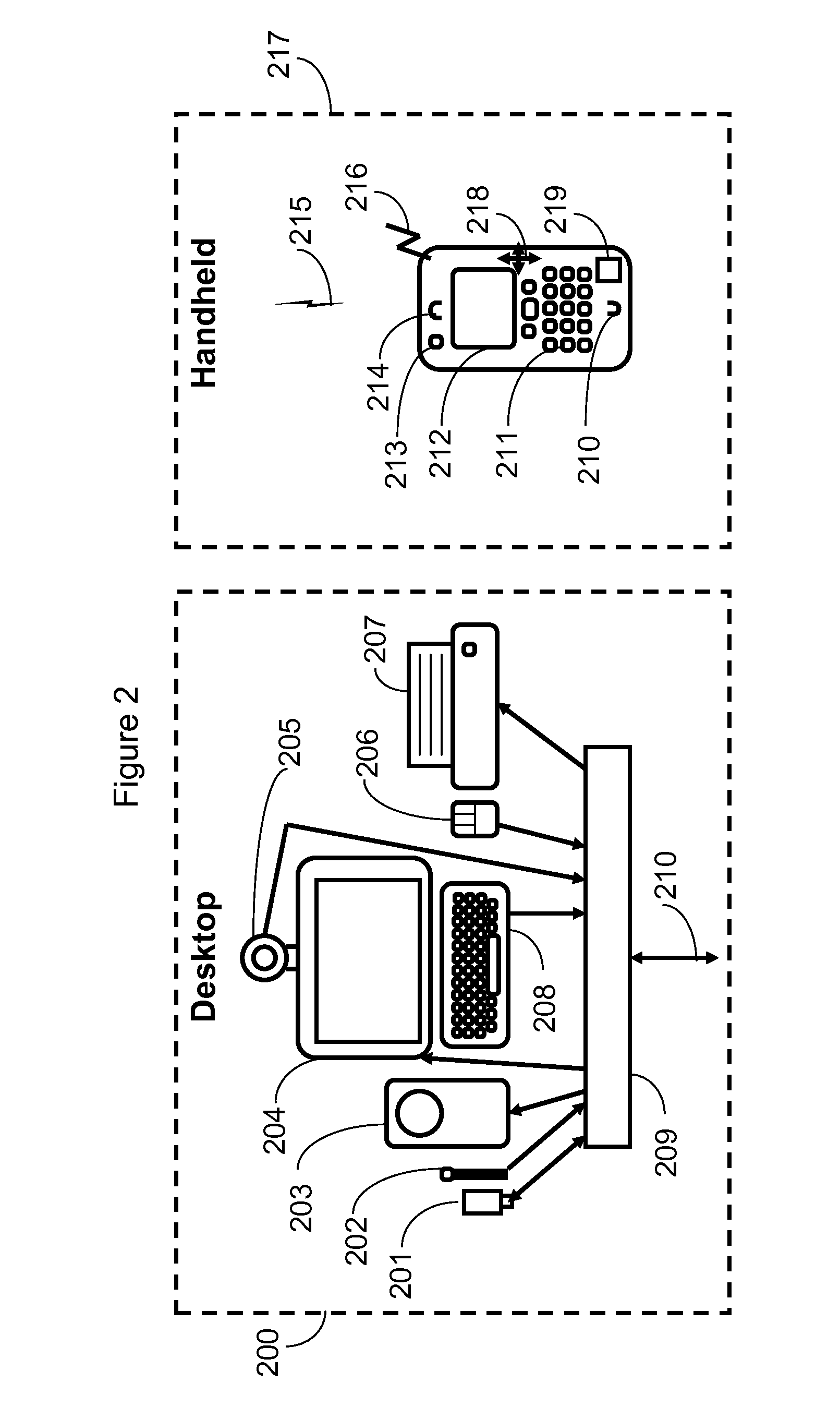Hierarchical display-server system and method
a display server and hierarchy technology, applied in the field of server devices and non-intelligent user devices, can solve the problem of limited processing for the user system, and achieve the effect of secure authorization
- Summary
- Abstract
- Description
- Claims
- Application Information
AI Technical Summary
Benefits of technology
Problems solved by technology
Method used
Image
Examples
Embodiment Construction
[0035]Referring to FIG. 1, a hierarchical server system 10 includes a master server 100 communicatively connected, respectively and either directly or indirectly, to five slave servers: slave server A 102, slave server B 101, slave server C 111, slave server D 103 and slave server E 110. The server system 100 communicatively connects, such as over a communications network, to a user system A 104 and to a user system B 109. The master server 100 particularly connects to three first-level slave servers: slave server A 102, slave server B 101 and slave server C 111. Two of these first-level slave servers (slave server A 102 and slave server C 111) connect to second-level slave servers: slave server A 102 connects to slave server D 103 and slave server C 111 connects to slave server E 110.
[0036]User system A 104 is a desktop style non-intelligent user system, for example, comprising four physical components: display 105, keyboard 106, mouse 108 and speaker 107. The keyboard 106, mouse 1...
PUM
 Login to View More
Login to View More Abstract
Description
Claims
Application Information
 Login to View More
Login to View More - R&D
- Intellectual Property
- Life Sciences
- Materials
- Tech Scout
- Unparalleled Data Quality
- Higher Quality Content
- 60% Fewer Hallucinations
Browse by: Latest US Patents, China's latest patents, Technical Efficacy Thesaurus, Application Domain, Technology Topic, Popular Technical Reports.
© 2025 PatSnap. All rights reserved.Legal|Privacy policy|Modern Slavery Act Transparency Statement|Sitemap|About US| Contact US: help@patsnap.com



